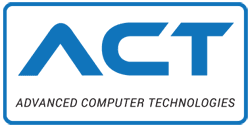During this unprecedented time, nearly every business in America has transitioned to a work-from-home environment. This shift happened almost immediately and without notice. The transition has been harder for some organizations than others. This article describes the three most common ways organizations are set up for remote access and provides tips on how to ensure you and your team are working as efficiently and securely as possible.
These are the three most common ways that employees access their systems remotely:
- Your organization’s data is hosted in the cloud.
Team members can easily access everything they need from virtually anywhere because all company data and programs are cloud-hosted. Organizations that have already made the jump to the cloud have had the smoothest transition to a remote workforce. - You use a VPN (Virtual Private Network) to login to a server or desktop.
In this scenario, employees are using VPN software to access the corporate network. - You use remote control software to remote into your desktop.
This option allows employees to access the computer in their office by using remote control software such as LogMeIn, GoToMyPC, or something similar.
In every scenario, there are fundamental things you need to consider to ensure you are working efficiently and securely.
Essential Things to Consider When Working from Home
Setting up an Efficient Workspace. Many of our office desks are equipped with multiple monitors, a docking station, a wireless keyboard and mouse, and a comfortable chair. Our company-supplied computers are usually robust and running the latest operating system. We have access to a corporate high-speed internet connection, commercial-grade printers, and all the office supplies needed to perform our jobs efficiently. So how do you replicate this setup at home?
Here are some areas to focus on when setting up an efficient workspace at home:
- Set yourself up in a room that allows for some privacy and separates you from typical family distractions. Make sure your workstation is ergonomically friendly and includes a comfortable chair and desk, as well as whatever office supplies you may need (e.g., pens, paper, stapler, etc.).
- Confirm your home internet connection is robust enough to support your workflow. If using a secure home wireless network, make sure the room you are working in has proper coverage.
- Will you be using an office computer or your home computer? Make sure your computer is robust enough and updated to the latest operating system. (More on this later.)
- Do you have all the right peripherals (i.e., a printer, scanner, webcam, additional monitor, etc.)? Make sure you have supplies for all these devices, such as ink, toner, paper, etc.
Security. Security plays a crucial role in maintaining a remote workforce successfully, no matter how you’re accessing your data. Hackers are paying attention to this opportunity. They know people are working from home in less secure environments than their offices, and they’re looking for ways to exploit this. It is important to remember that every individual’s home network provides an entry point into the corporate environment. Therefore, it is critical to secure every computer and home network.
Here are a few things to confirm:
- Are you working behind a firewall or secure router?
- Is your wireless network secure?
- Is your computer’s Operating System up-to-date and patched for vulnerabilities?
- Does your computer have an up-to-date anti-virus program that runs regularly?
- Be aware of an increased amount of spam and phishing attacks. Hackers are using this pandemic to get access to your personal information.
Company Data, Applications, and Backup. When working remotely, we may access data differently than when we are at the office. Here are a few things to keep in mind when it comes to accessing company data and applications remotely:
- Where are the applications and corresponding data stored?
- How will you ensure that data is saved properly within the company’s structure, and not inadvertently on your local hard drive? Doing so would increase the likelihood of version control issues and even lost data once returning to work.
- If you are saving data locally, are you backing it up?
Management, Communications, and Collaboration. When working remotely, it’s a little harder to pop by someone’s desk and ask them a quick question. Cloud-based (VOIP) phone systems are perfectly designed for this type of situation. They are portable and allow you to remain as available as if you were in your office. Clients and co-workers can call you, and your extension will ring right in your own home office.
Also, consider how you will communicate with your team members and supervisors. Will you host conference calls or video calls to maintain a sense of how things are progressing? Is it important to maintain a particular culture, encouraging individuals to live chat or get together for virtual happy hours?
There are numerous options available to do this, including Microsoft Teams, Zoom, Slack, Skype for Business, GoToMeeting, Google Hangouts, and UberConference, to name a few.
Clearly, numerous areas need to be considered when working from home and supporting a remote workforce. Do not hesitate to give us a call if you need guidance on how to create a more efficient and secure environment for your company and yourself.
